Custom Design
Imagine this: you spend ₹50,000 a month on advertising campaigns, seeing people flock to your site, and then merely 2% turn into paying clients. Sound familiar? This happens to countless entrepreneurs, watching their marketing investment go down the drain without knowing where the prospects fall off or why they opt out of the process.
Funnel analysis converts this aggravating shoot-from-the-hip estimation into accurate, actionable knowledge. By methodically analyzing each phase of your customer process, you discover the precise points where possible revenue is lost and, more importantly, how to seal those expensive leaks.
This detailed handbook will guide you through creating a powerful funnel analysis system that transforms customer journey data into dollar-generating insights, enabling you to get the most out of every rupee invested in customer acquisition and create a predictable growth engine for your business.

Funnel analysis is the organized review of how customers navigate through every phase of your sales process, from awareness to ultimate purchase and on. It’s like making a detailed map of your customer journey, mapping where prospects come in, move along, get stuck, or drop out altogether.
Whereas simple traffic reports merely present you with numbers, funnel analysis tells the story behind them. You’ll learn not only how many visitors came to your price page, but why 70% didn’t convert, what traffic sources send the best-converting visitors, and what messages resonate best with your audience.
The actual business strength is to be able to measure opportunity costs. When you’re aware that 1,000 individuals visit your checkout page but merely 300 make a purchase, you’re dealing with 700 potential customers worth potentially lakhs in revenue. Customer journey analysis lets you find out the ‘why’ behind these drop-offs so you can target improvements that have a direct effect on your bottom line.
This is not merely about monitoring web behaviour. Contemporary funnel analysis includes all touch points: social media activity, e-mail exchanges, calls, face-to-face meetings, and after-purchase interactions. All of them are converted into data points that feed into an end-to-end understanding of your customer acquisition and customer retention process.

Sales funnel analysis is not another analytics project—profitable growth’s foundation. That is why learning this science can revolutionize your business performance:
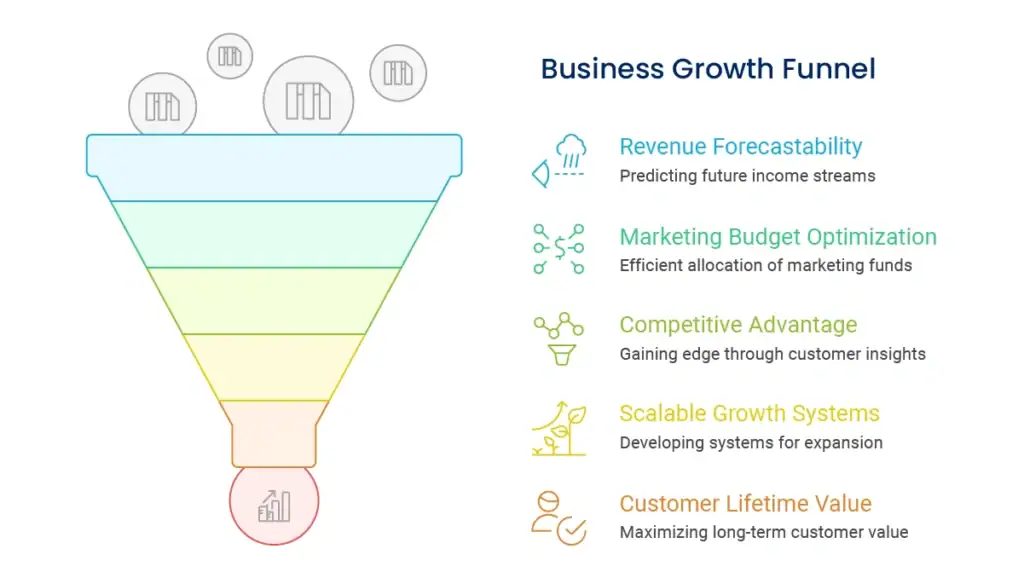
Once you know your conversion rates at every stage of your funnel, you can forecast revenue with precision based on traffic levels. If you know 5% of website traffic convert into leads and 20% of leads convert into customers, you can precisely know how much traffic you need to achieve ₹10 lakh in monthly revenue.
Cease spending money on channels that do not convert. Funnel analysis identifies which marketing channels deliver visitors who actually purchase, enabling you to move budgets to high-performing channels and cut wasteful expense.
Most companies make educated guesses about what customers desire. Conversion funnel optimization provides you with hard data on customer preference, pain points, and decision-making behavior, which represents a powerful competitive advantage.
Once you realize what works in your funnel, you can methodically scale those parts that succeed. If adjusting your checkout process boosts conversions by 15%, you know just what to duplicate as you expand.
Post-purchase funnel analysis shows potential for upsells, cross-sells, and retention optimisation. Grasping the whole customer lifecycle enables you to establish relationships with years of revenue-generating potential, rather than individual transactions.
Your competitors can emulate your products or prices, but they cannot reproduce years of regular, valuable content that have built your reputation and search authority.
The financial results can be significant. We’ve helped companies grow revenue by 40-60% by fixing key funnel leaks, without spending more on customer acquisition in many cases.
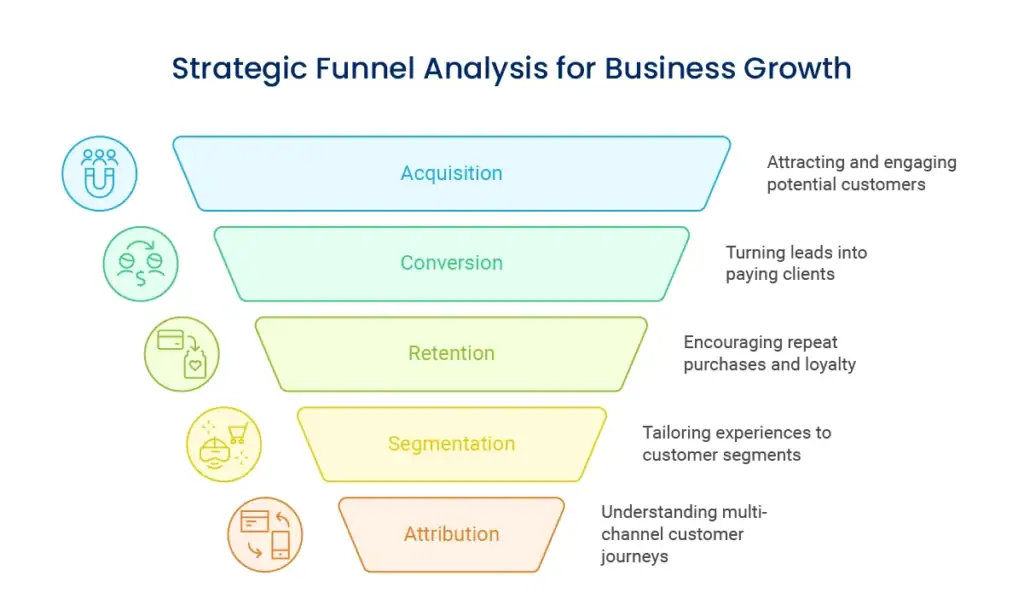
This looks at how people find and first interact with your brand. You’ll follow the path from first contact through generation of leads, looking at which channels, messaging, and offers create the best-quality prospects.
Business benefit: Reveals your most valuable marketing channels and messaging tactics, enabling you to focus resources on activities delivering highest return on investment.
The heart of revenue creation, studying how leads become paying clients. This entails reviewing all steps from initial curiosity to final purchase, looking for friction points that hinder conversion.
Business benefit: A direct effect on revenue by disclosing precisely where prospective clients drop off during their purchase process and what alterations will enhance completion.
Segments funnel performance by customer segments, demographics, or behaviour patterns. Perhaps you find that mobile visitors convert differently from desktop visitors, or customers within specific regions have distinct journey patterns.
Business benefit: Allows for personalized experiences that drive conversion rates higher by matching specific segment needs and preferences.
Tracks how customers behave at multiple touchpoints before converting, offering a full view of the customer journey instead of giving credit only to the final interaction.
Business benefit: Stops budget waste by demonstrating the actual contribution of every marketing channel to ultimate conversions.
Building good funnel analysis involves mapping your entire customer journey architecture. This is more than just page-to-page mapping to learn about the emotional and rational journey customers take.
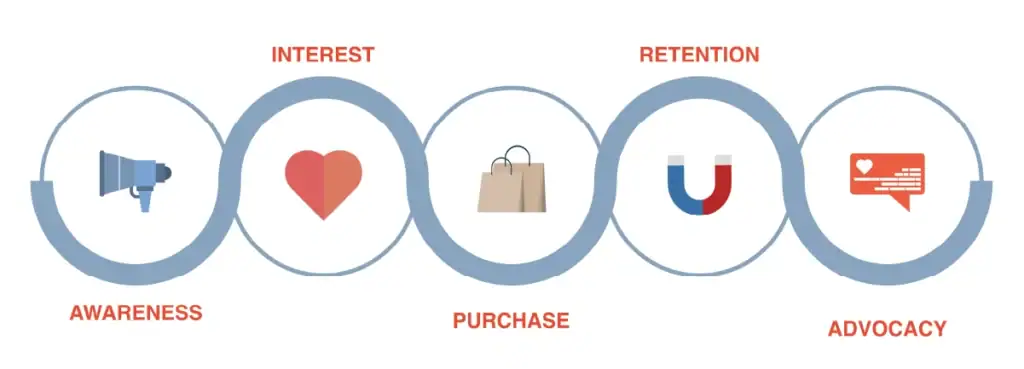
Begin by mapping all the places potential customers are first exposed to your brand. This may include organic search engine results, social media shares, referral links, paid ads, word-of-mouth, and offline engagements. Each touchpoint is a singular entry point with varying mindsets and expectations.
Record the specific stimuli that bring prospects from casual browsers to active visitors. This could be viewing a specific content item, viewing your site for a specific number of minutes, or viewing two or more pages in a session.
Chart the research and comparative process your prospects go through. Record what content items they are viewing, how they weigh your offerings against competitors, and what questions they ask at this stage.
Pay close attention to the patterns of information gathering. Do potential customers read case studies prior to reaching out for demos? Do they download several resources prior to reaching out to sales? Knowing these patterns enables you to anticipate needs and offer information precisely when it is most valuable.
Examine the ultimate process of decision-making. What initiates the shift from consideration to buy? Is it a particular promotion, a sales interaction, social recommendation, or something else altogether?
Discuss the various decision influencers’ roles. In B2B contexts, several stakeholders may impact the ultimate decision. Your funnel analysis must factor in these complicated dynamics and outline how to satisfy each stakeholder’s worries.
The journey doesn’t conclude with purchase. Map the onboarding process, early product use, support interactions, and long-term engagement behaviors. This phase normally contains the most revenue growth opportunities through upsells, cross-sells, and referrals.
Knowing this entire structure allows you to craft experiences that lead prospects effortlessly through each step, minimizing friction and maximizing conversion rates at every point.
Successful funnel analysis involves systematic data gathering from all customer touch points. Without complete data, you’re constructing strategies based on partial facts.
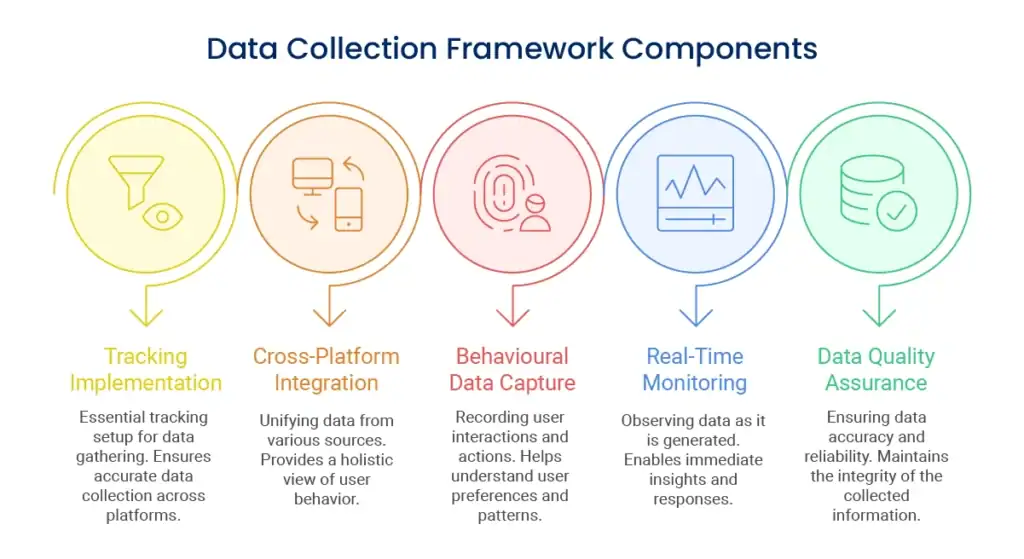
Start with web analytics configuration that’s more than simple page views. Install event tracking for actions such as: button clicks, form submissions, video plays, document downloads, and time on select pages. Every interaction reveals intent and engagement levels of users.
Establish goal tracking that corresponds to your business goals. If signups by email are worth measuring, track not only the rate of signups but also the quality of signups as a function of downstream activity. If phone calls convert into sales, set up call tracking to link marketing efforts to revenue results.
Contemporary customers engage with brands through various touchpoints and devices. Your data collection infrastructure has to bridge these touchpoints to deliver a single view of every customer journey.
Combine email marketing data, social media interactions, customer service contacts, and offline activities where necessary. Employ customer relationship management tools to develop elaborate profiles that follow the entire journey from initial contact to long-term customer.
Aside from what customers do, record information on how they act. Monitor the mouse trails, scroll depths, hesitation patterns, and exit points. Such behaviour data tends to expose things that basic analytics would not.
Monitor session recordings of high-value pages such as price and checkout. Knowing where customers hesitate, re-read, or drop off provides qualitative information to supplement quantitative data.
Install systems to notify you of dramatic funnel performance changes. If your typical 5% conversion rate plummets to 3%, you must be informed right away, not in next month’s report.
Develop dashboards to give immediate visibility into key performance monitoring metrics. This allows for immediate response to problems and opportunities as they happen.
Create processes to provide accurate and complete data. Periodic audits of tracking implementation, data validity checks, and cross-verification of multiple systems avoid decision-making on faulty information.
Document your tracking approach and have it reviewed regularly as your business changes. What you measure must change with your business strategy and shifts in customer behavior.
Beyond simple conversion rates, more advanced funnel analysis methods uncover nuanced patterns that result in high-impact business enhancements.

Cohort analysis classifies customers into categories by common traits or by time, uncovering how behavior trends differently over time. You may learn that customers who were bought in January have greater lifetime values than those bought in June, which means you have seasonal patterns that will determine how you target your marketing efforts.
Follow cohorts on their entire path to determine patterns in conversion timing, purchase amounts, and retention. This time-based view anticipates customer behavior and maximizes acquisition tactics.
Use strict testing practices to guarantee your optimisation results yield genuine improvements, not evanescent changes. Employ A/B testing for large modifications and multivariate testing for intricate relationships between various factors.
Calculate confidence intervals and ensure adequate sample sizes before drawing conclusions. Many businesses make costly changes based on insignificant data differences that don’t represent true performance improvements.
Use regression analysis to identify which factors most strongly influence conversion rates. This might reveal that page loading speed has a bigger impact than previously realised, or that certain traffic sources consistently produce higher-value customers.
Multivariate regression gives insight into how various factors work together. Bringing together certain content and traffic sources may yield greater outcomes than either of them in isolation.
Develop predictive models to predict customer actions upon initial-stage interactions. If you can recognize high-probability buyers following only two page visits, you can tailor their experience to maximize conversion probability.
Apply machine learning models to detect patterns in customer data that would be missed by humans. The algorithms improve with more data, building a competitive edge that snowballs over time.
Go past last-click attribution to ascertain the actual contribution of each touchpoint. First-touch attribution indicates what generates the first awareness, while multi-touch attribution indicates how various channels collaborate to generate conversions.
Apply time-decay models that assign greater credit to proximity to conversion, or position-based models that give more weight to first and last touch. Various attribution models provide different insights into your marketing performance.
Conversion funnel optimisation directly connects to revenue growth through systematic improvement of key conversion points.
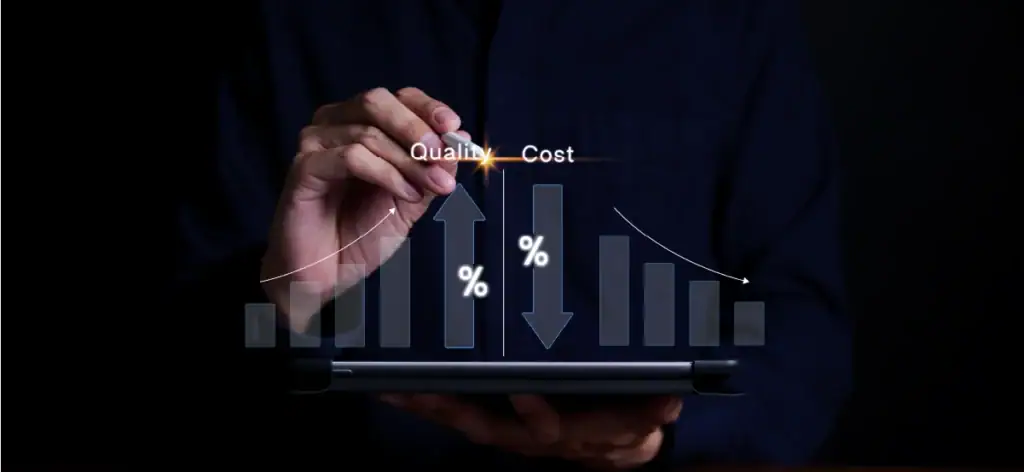
Not all funnel improvements deliver equal returns. Focus first on changes that affect the largest number of prospects or have the highest conversion lift potential. A 10% improvement in your checkout process affects every potential customer, whilst optimising a rarely-visited page produces minimal impact.
Estimate the potential revenue effect of each optimisation opportunity. If 1,000 visitors per month land on your price page and 300 convert, a 10% improvement in conversion adds 100 new customers. Scale that by average customer value to calculate the opportunity.
Methodically find and remove friction points that inhibit conversions. Common friction sources are complex forms, confusing pricing, technical problems, trust issues, and bad mobile experiences.
Apply heat mapping and session recording tools to determine areas where customers get stuck. Where users repeatedly try to click on non-functional items or drop off in the middle of forms at certain fields, these areas of friction are optimisation targets.
Apply personalisation tactics against customer segments, behaviour patterns, or traffic sources. Consumers visiting through different marketing channels will also tend to have varying expectations and information demands.
Design dynamic content that follows user behavior. If a user spends a lot of time viewing technical details, display elaborate product information. If they linger on prices, highlight value and warranties.
Overcome trust issues that hinder conversions by placing social proof points in strategic locations all over your funnel. Testimonials from customers, security emblems, warranty details, and usage metrics all aid conversion optimisations.
Experiment with various forms of social proof to find out what works best with your public. Some users are moved by peer reviews, while others are motivated by expert recommendations or numerical evidence of success.
With mobile traffic frequently higher than desktop traffic, mobile funnel optimisation is now the key to revenue growth. This is more than responsive design to think about mobile particular user behaviors and expectations.
Streamline mobile forms, optimize page load times, and include mobile payment options. Mobile customers tend to have varying intent and time considerations than desktop customers.
Successful sales funnel analysis calls for strong technology infrastructure which gathers complete data while delivering actionable recommendations.
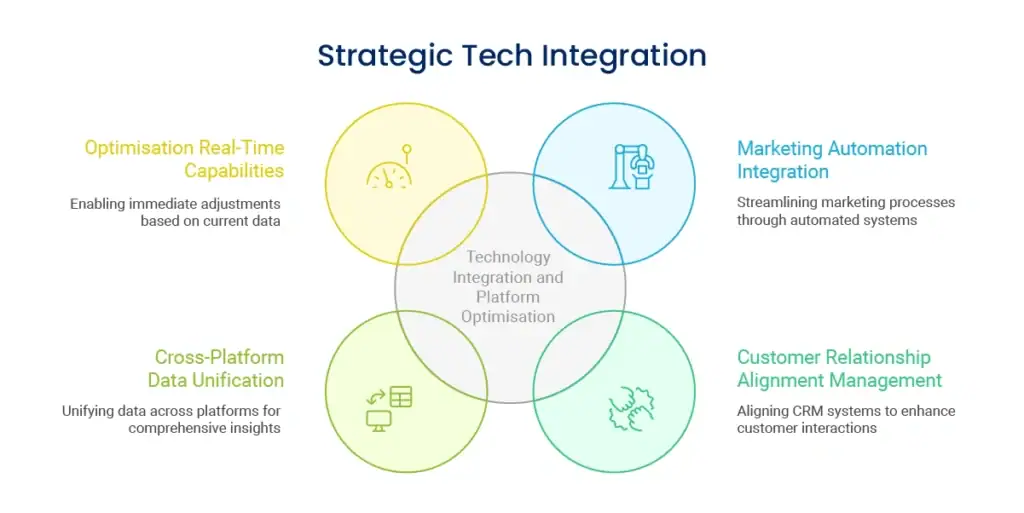
Select analytics platforms which support the complexity of your business and analysis requirements. Google Analytics forms good bases for most companies, but sophisticated funnel analysis may need applications such as Mixpanel, Amplitude, or custom dashboard solutions.
Implement tracking that records not only what occurs, but the context of events. Follow the entire customer journey, from time spent between touchpoints to sequence of interactions and behaviour patterns that indicate likelihood of conversion.
Integrate your funnel analysis with marketing automation platforms to make data-driven, responsive campaigns. When analysis indicates that customers who download particular content are 3x more likely to buy, automation can nurture those high-probability leads with tailored messaging.
Apply funnel behaviour-based triggers. If a person leaves a shopping cart, automatic email flows can help to resolve typical issues and redirect them towards completing the purchase.
Align your CRM with funnel data to offer behaviour-based insights to the sales teams. When a prospect asks for a demo after viewing certain content, salespeople can tailor their approach according to interest demonstrated.
Score leads on proven purchase intent through funnel analysis. This allows sales teams to focus on high-probability leads while marketing continues to nurture low-probability leads.
Install technology that ties together customer behavior across platforms and touchpoints. Customer data platforms (CDPs) build shared customer profiles that enable better full funnel marketing strategy decisions.
Maintain data consistency between platforms to avoid clashing insights. When various systems present varied conversion rates for the same campaign, data quality challenges erode confidence in decision-making.
Put in place technology supporting real-time funnel adjustments in response to performance data. In the event that a specific traffic source is suddenly reporting dropping conversion rates, you should be able to have an immediate tweak of bidding, messaging, or targeting.
Build automated rules that optimize campaigns based on performance in the funnel. If specific keywords are consistently driving high-performing traffic, automated bid adjustments can take advantage of these opportunities.
Customer journey analysis goes beyond the first conversion to cover the entire customer relationship and its revenue value.
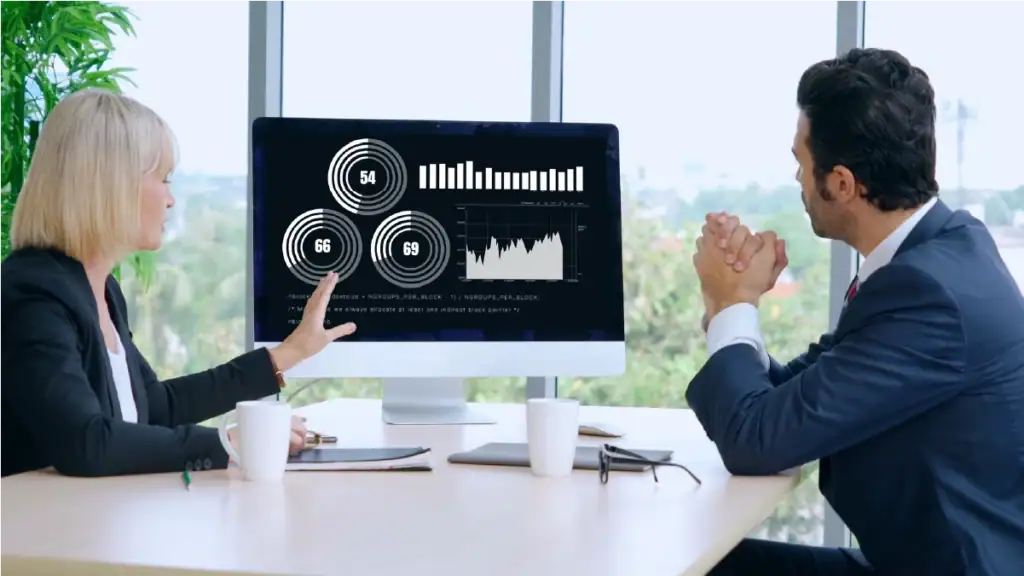
Implement full monitoring of customer behaviour following first purchase. This involves product usage habits, support interactions, feature adoption, and interaction with ongoing communications.
Monitor onboarding experiences and long-term customer value. Customers who proceed with certain onboarding steps tend to have higher retention rates and lifetime values, which makes these initial interactions key optimisation areas.
Create predictive models that can identify customers who are likely to churn based on behaviour patterns. Early warning systems make it possible to intervene proactively and save customer relationships and related revenues.
Analyze the profile of long-term, high-value customers to guide acquisition initiatives. If certain demographic or behaviour groups are worth more over their lifetimes, the acquisition programs can be focused on similar potential buyers.
Build independent funnels for upselling and cross-selling existing customers. Such customers already have confidence in your brand, so they are an easy prospect to convert to other products or services.
Monitor the timing and cues that make customers most open to further purchases. Some customers are receptive to instant post-purchase offers, while others require some time to enjoy first-time value before considering expansions.
Study the path from satisfied customer to active advocate. Knowing what drives customers to refer others translates to systematic advocacy programs that generate high-quality, low-cost customer acquisition.
Monitor lifetime value of referred customers against other acquisition channels. Referred customers tend to have greater retention levels and values, so referral program investments are especially valuable.
Align customer success metrics with funnel analysis to see how customer experience drives retention and expansion revenue. Customers who are successful at achieving particular outcomes or milestones tend to become more valuable long-term customers.
Apply success metrics to enhance the process of acquiring customers. If the same kinds of customers are consistently performing better, marketing can target similar prospects with increased efficiency.
Successfully implementing comprehensive funnel analysis requires organisational commitment and systematic change management.
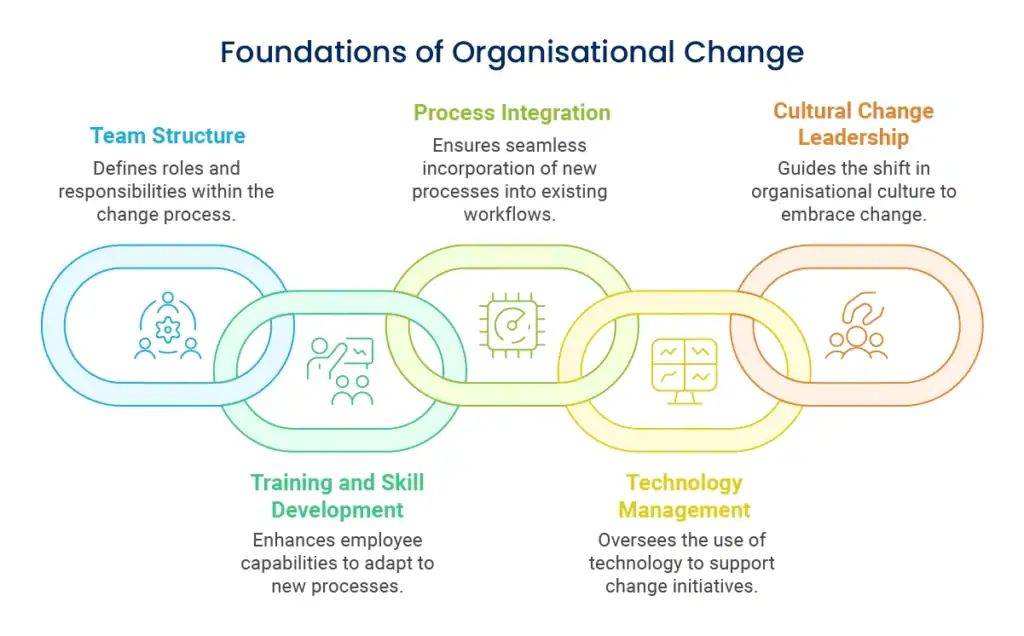
Establish clear ownership for funnel analysis activities. This might involve dedicated analytics and reporting specialists, but successful implementation requires collaboration between marketing, sales, product, and customer service teams.
Create cross-functional teams that can translate analysis insights into actionable improvements. Marketing teams might identify the insights, but product teams implement website changes, and sales teams adjust their processes based on customer behaviour patterns.
Invest in training team members to understand and utilise funnel analysis insights. This includes both technical skills for data analysis and strategic thinking for translating insights into business improvements.
Develop internal expertise rather than relying entirely on external consultants. Whilst agencies can provide specialised skills, internal teams have deeper business context and can respond more quickly to opportunities.
Integrate funnel analysis into regular business operations rather than treating it as a separate activity. Include funnel performance in weekly team meetings, monthly business reviews, and strategic planning sessions.
Establish regular review cycles that examine funnel performance, identify optimisation opportunities, and track the impact of previous improvements. Make data-driven decision-making a standard part of business operations.
Develop internal capabilities for managing and maintaining analysis tools. This includes understanding tool limitations, troubleshooting tracking issues, and keeping systems updated as business needs evolve.
Create documentation that ensures continuity if team members change. Undocumented analysis methods create business risks when key personnel leave.
Lead cultural change that prioritises data-driven decisions over intuition-based choices. This requires consistent demonstration of how funnel analysis insights improve business outcomes.
Celebrate successes that result from funnel analysis to reinforce the value of systematic measurement and optimisation. When teams see direct connections between analysis insights and business improvements, adoption increases naturally.
Funnel analysis is best realized when aligned into large-scale business strategy and value creation efforts.

Utilize funnel insights to drive strategic business choices outside of marketing optimization. Knowing customer acquisition costs, lifetime values, and behavior patterns should shape product development, pricing strategies, and market expansion choices.
Use funnel data in financial planning and business planning. When you know conversion rates and customer values, you can better forecast revenue and plan resource allocation.
Compare your funnel performance with competitive benchmarks to learn strategic strengths and weaknesses. Better conversion rates in some segments can be competitive advantage opportunities.
Apply customer journey insights to make your offering distinguishable from competition in a way that’s hard for others to imitate. If your study identifies distinct customer wants or preferences, product development can establish lasting competitive advantages.
Have funnel analysis drive investment choices regarding technology, people, and marketing investment. Data-driven resource allocation delivers improved returns compared to decisions based on intuition.
Compute return on investment for various optimisation activities in order to rank improvements that have the most business impact. Some improvements involve heavy investment and yield marginal gains, while others yield big results with little expense.
Apply funnel analysis to analyze partnership opportunities and channel strategies. Various partners and channels tend to yield customers of differing characteristics and values.
Examine the end-to-end customer journey across multiple channels to get a true value of each relationship. Certain channels may be costly in terms of acquisition but bring in customers who have better lifetime values.
Develop capabilities that build up over time to enhance performance instead of doing one-time fixes. The aim is to develop an organisational capability in customer journey understanding and optimisation.
Build intellectual property and competitive differentiation on deeper customer insight. Companies that know their customers best can build offerings and experiences that copycats find difficult to follow.
Develop capabilities that build up over time to enhance performance instead of doing one-time fixes. The aim is to develop an organisational capability in customer journey understanding and optimisation.
Build intellectual property and competitive differentiation on deeper customer insight. Companies that know their customers best can build offerings and experiences that copycats find difficult to follow.
Think through how funnel analysis insights can influence new business models or revenue streams. Insights from customer behavior may suggest new services, products, or partnership opportunities.
The companies that thrive using funnel analysis utilize it as an ability that influences all customer-facing initiatives. It creates sustainable competitive positions and predictable revenue gains through this organized process of learning about and optimizing customer journeys.
Even the most well-meaning conversion funnel optimization attempts can fail if you steer clear of these pitfalls:
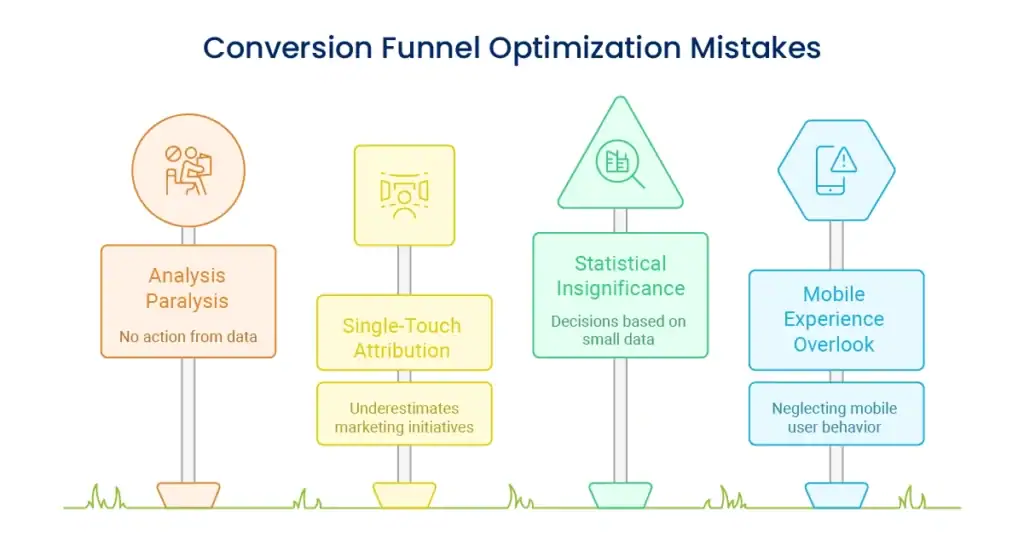
Funnel analysis works to shift your company from guessing how customers behave to actually knowing how prospects navigate your sales process and where there are opportunities to increase revenue.
The businesses that excel at this field achieve stable revenue growth, marketing investments optimized, and customer insights that build sustainable competitive strengths. By methodically analyzing each step of your customer journey, you reveal the exact changes that convert more prospects into paying customers while maximizing the value of current relationships.
Begin with simple tracking and analysis and build more advanced capabilities over time. The most important thing is to take the first step toward data-driven customer insight that has a direct effect on your bottom line. Each day that you fail to implement systemic funnel analysis is a day of lost revenue potential and wasteful marketing expenditure.
Developing end-to-end funnel analysis skills needs strong expertise in analytics configuration, data interpretation, and consistent optimisation procedures. We have the expertise to assist companies in installing sales funnel optimization systems that have a direct effect on revenue increase. We support you from initial tracking installation to sophisticated predictive modelling, offering the skills and assistance required to turn your customer information into profits-driving insights.
Results generally start to be observed anywhere from 2-4 weeks for near-instant optimisations such as checkout process improvements, while wider strategic optimisations may take 2-3 months to achieve maximum impact. The most important thing is to apply systemised measurement right at the beginning so that you can see improvements as they happen.
Typically, you want at least 100 conversions a month to see significant patterns, although 1,000+ conversions are much more accurate. For lower-traffic sites, look at longer time spans and overall patterns instead of in-depth segment analysis.
Begin with free software such as Google Analytics and move on to paid levels only after you have exhausted their maximum potential. Most businesses can make meaningful improvements through fundamental tools supplemented by rigorous analysis techniques. Invest in sophisticated tools when business value evidently exceeds their costs.

Enter your email to get instant access